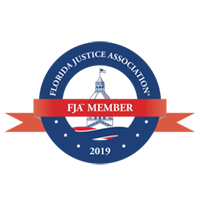Boating in Florida is a popular activity, thanks to its ideal weather and numerous waterways, but it comes with risks that can lead to serious accidents and legal disputes over liability. Understanding the state’s legal framework for boating accidents is key, particularly around negligence, which includes duty of care, breach of duty, causation, and damages. In Florida, these elements are crucial for resolving boating accident lawsuits, with specific attention to scenarios like no wake zones that have unique rules.
The process begins with establishing a boat operator’s duty of care to maintain safety on the water. However, proving duty of care doesn’t automatically assign blame; it lays the groundwork for identifying any breaches. These breaches might occur through reckless actions, such as boating under the influence or ignoring safety regulations. Marinas also bear responsibility for renting out boats responsibly and maintaining them properly.
Causation is about linking the breach of duty directly to the accident, a connection that might be contested by the defense, especially under Florida’s comparative negligence law, which divides fault among parties based on their involvement in the accident. Plaintiffs must then prove the extent of damages incurred, which can range from medical costs to emotional distress.
Navigating these legal waters requires a deep understanding of negligence and state laws. Personal injury attorneys, like those at Serrano Law, are adept at dissecting these cases, advocating for victims, and pursuing fair compensation, ensuring justice for those affected by boating accidents in Florida.
What is a No Wake Zone?
A No Wake Zone refers to a specific section of a waterway where regulations require boat operators to travel at a minimal speed, producing the smallest possible wake or turbulence behind their vessels. These zones are strategically placed in various parts of waterways, often in locations that experience heavy boat traffic, have narrow passages, are close to residential neighborhoods, near marinas, or within environmentally sensitive areas like wetlands or conservation sites.
The primary goal of establishing a no wake zone is to ensure safety on the water for all users, ranging from large vessels to smaller recreational boats and even swimmers. By reducing the boat’s speed, the risk of accidents and collisions is significantly minimized, creating a safer environment for everyone. Additionally, these zones help in protecting the structural integrity of waterfront properties and community facilities from the potential damage caused by high waves and turbulent wakes.
Moreover, no wake zones play a crucial role in environmental conservation. They help in preserving the natural habitat of aquatic life by preventing erosion, reducing sediment disturbance, and safeguarding nesting grounds for birds and marine species. Areas such as seagrass beds, mangrove forests, and coral reefs benefit from these regulations, as they are less disturbed by the physical impact of boat traffic.
Enforcement of no wake zones is typically signaled through clear signage along the waterway, alerting boaters to the need to decrease speed. Compliance is not only a matter of legal obligation but also a reflection of boaters’ respect for the safety and environmental guidelines of the waterways. Violating these regulations can result in fines and penalties, emphasizing the importance of adhering to the speed limits set within these zones.
In essence, no wake zones are a critical aspect of maritime regulation, designed to balance the enjoyment of boating with the necessity of safety, environmental protection, and community well-being. They require boaters to operate at idle or no-wake speed to prevent wake damage, protect the environment, and ensure a safe, enjoyable experience for all waterway users.
Multi-Collision Car AccidentClient Testimonial
How do No Wake Zone Regulations Impact Liability?
No wake zone regulations are a critical element in assessing liability for boating accidents, as they define specific areas where boat operators must significantly reduce their speed to minimize the wake produced by their vessels. These regulations aim to protect other vessels, swimmers, and waterfront properties from the potential hazards caused by large wakes. Understanding the implications of these rules is essential in determining who is at fault in boating mishaps.
In the context of no wake zones, liability is influenced by various factors, including the boat operator’s compliance with the regulations. Operators are legally required to observe no wake zone signs and reduce their speed accordingly. Ignoring these regulations can lead to a breach of duty, particularly if an accident or property damage occurs as a result of the excessive wake. Therefore, adherence to no wake rules is a primary consideration in liability cases.
The proximity of the boat to other vessels and waterfront properties is another crucial factor in determining liability. Boaters navigating through no wake zones are expected to exercise increased caution to avoid collisions and damage to structures or natural habitats along the shoreline. The intention behind the reduced speed requirement in these zones is to decrease the likelihood of accidents and minimize potential harm to the environment and property. Non-compliance with these speed limits not only heightens the risk of accidents but can also lead to significant liability for any damages incurred.
In situations where a boating accident occurs within or near a no wake zone, the concept of contributory negligence often comes into play. This legal principle allows for the apportionment of fault among multiple parties involved in the accident, based on their respective contributions to the incident. For instance, if one boat operator disregards the no wake speed limit while another boat fails to give way appropriately, both operators may be found partially liable for the collision and its consequences.
Mitigating factors can play a role in the assessment of liability in no wake zone-related boating accidents. These factors include adverse weather conditions, navigational challenges, or mechanical failures that may have contributed to the accident. The courts may also consider the efforts made by boat operators to mitigate risks and prevent accidents, such as using horns or signals to communicate with other vessels.
Understanding and complying with no wake zone laws are not only legal obligations but are also integral to promoting safety in boating practices. Boat operators are urged to remain vigilant and cautious when navigating through these restricted areas to prevent accidents and safeguard the well-being of passengers, other boaters, and waterfront communities. The impact of no wake zone regulations on liability in boating accidents underscores the importance of these rules in maintaining safety and order on the waterways.
Case Results
What is Comparative Negligence?
In Florida, the legal concept of modified comparative negligence plays a crucial role in determining liability and awarding damages in personal injury lawsuits — including those caused by boating accidents. In March 2023, the Florida Senate passed House Bill 837, establishing the use of “modified comparative negligence” in Florida civil suits.
What is Modified Comparative Negligence?
Modified comparative negligence is a legal doctrine used in personal injury cases to allocate fault and determine the amount of compensation awarded to the injured party. Under this doctrine, the court evaluates the degree of fault attributable to each party involved in an accident and adjusts the final damages award accordingly.
How Does Modified Comparative Negligence Work in Florida?
In Florida, modified comparative negligence follows the “50% Rule.” This means that an injured party can still recover damages in a personal injury lawsuit even if they were partially at fault for the accident, as long as their level of fault does not exceed 50%. However, if the injured party is found to be 50% or more responsible for the accident, they are barred from recovering any damages.






Implications for Personal Injury Cases
Modified comparative negligence can have significant implications for personal injury cases in Florida:
Assessment of Fault: Establishing fault is a critical aspect of personal injury lawsuits. Attorneys on both sides will carefully scrutinize the circumstances surrounding the accident to determine each party’s degree of negligence.
Damages Calculation: The calculation of damages in personal injury cases becomes more complex when modified comparative negligence is applied. Courts must consider each party’s percentage of fault and adjust the damages award accordingly.
Settlement Negotiations: Understanding the principles of modified comparative negligence is essential during settlement negotiations. Parties may seek to minimize their degree of fault or challenge the other party’s assertions of negligence to achieve a more favorable outcome.
Trial Strategy: In cases where fault is disputed, attorneys must develop effective trial strategies to present evidence and arguments supporting their client’s position on liability and damages.
Choosing The Right Personal Injury Attorney Personal Injury Settlement TimelineRelated Videos
Fighting For You
No wake zone regulations are essential components of Florida’s boating regulatory framework, promoting safety, environmental stewardship, and responsible boating practices. By understanding and adhering to these regulations, boaters can contribute to the preservation of Florida’s aquatic ecosystems and ensure a safe and enjoyable boating experience for all. But when a boater ignores the regulations and causes an injury, the experienced attorneys at Serrano Law are committed to advocating for you.
Contact us today for your free consultation you deserve advocates in your corner.



